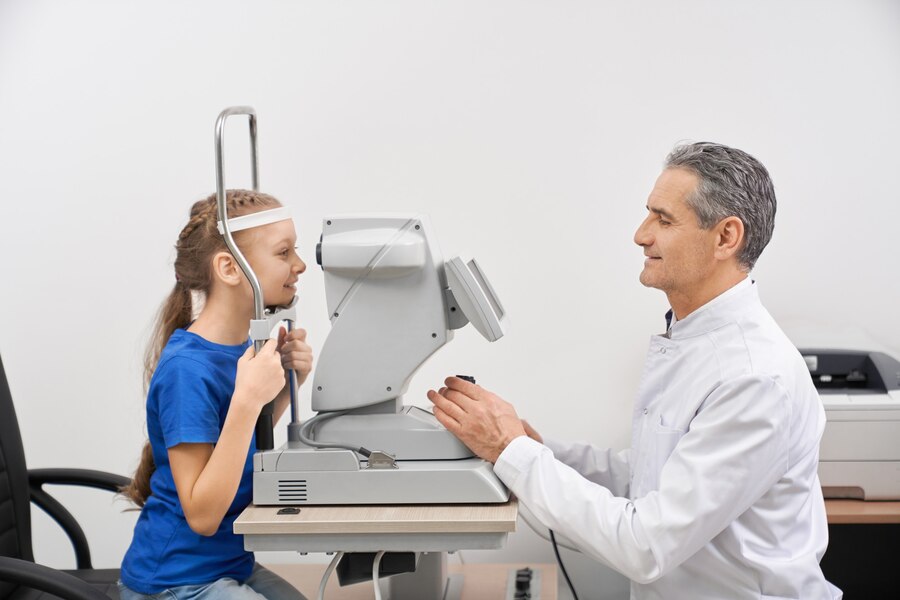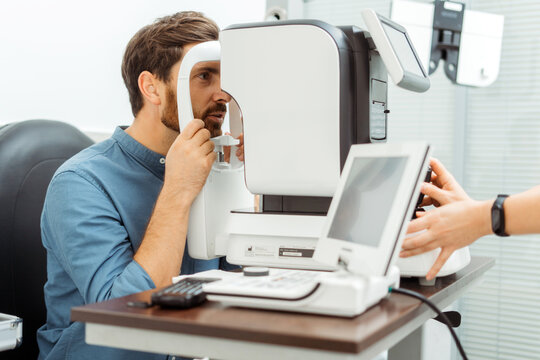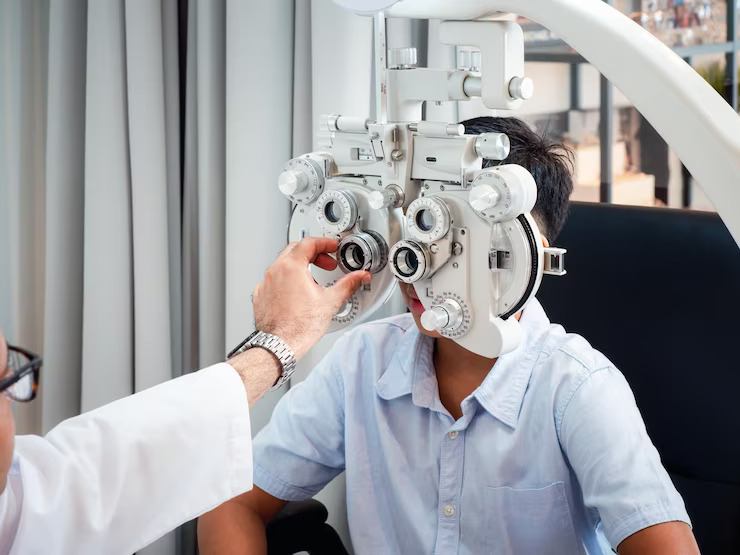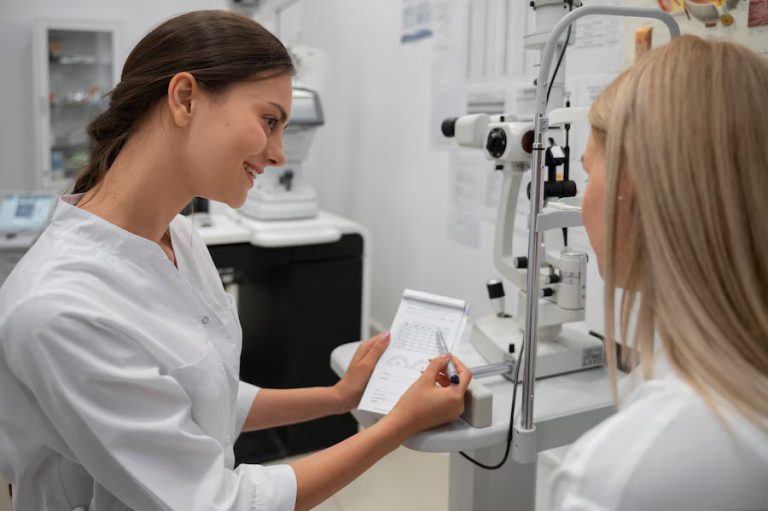The Importance Of A Complete Eye Examination
A complete eye examination is a comprehensive assessment of the eyes and visual system performed by an eye care professional, such as an optometrist or ophthalmologist. This essential health check-up goes beyond simply determining the need for glasses or contact lenses; it plays a critical role in detecting eye diseases, monitoring overall health, and maintaining optimal vision throughout life.
Why Regular Eye Examinations Matter
Regular eye examinations are crucial for several reasons. Firstly, they help in the early detection of eye diseases that may not present noticeable symptoms until they have progressed significantly. Conditions like glaucoma, diabetic retinopathy, and macular degeneration can lead to irreversible vision loss if not identified and managed early. Secondly, comprehensive eye exams can reveal signs of systemic diseases such as diabetes, hypertension, and even certain cancers, which often manifest initial symptoms in the eyes.
Components of a Complete Eye Examination
A complete eye examination involves several tests and procedures designed to evaluate different aspects of eye health and vision. Here’s a detailed look at the key components:
- Medical History Review
Before any tests are conducted, the eye care professional will review the patient’s medical history. This includes any past eye conditions, surgeries, family history of eye diseases, and current medications. Understanding the patient’s overall health is essential for providing accurate diagnoses and recommendations. - Visual Acuity Test
This exam gauges a person’s vision at different distances. The patient reads letters on a chart (Snellen chart) positioned at a specific distance. This helps determine the clarity of vision and is crucial for diagnosing refractive errors such as myopia (nearsightedness), hyperopia (farsightedness), and astigmatism. - Refraction Test
The refraction test determines the exact prescription for eyeglasses or contact lenses. Using a phoropter, the eye care professional presents a series of lens choices to the patient and asks which lenses provide clearer vision. This test fine-tunes the prescription needed to correct any refractive errors. - Slit-lamp Examination
A slit-lamp exam involves using a microscope with a bright light to examine the structures at the front of the eye, including the cornea, iris, lens, and anterior chamber. This test can reveal conditions such as cataracts, corneal ulcers, and other abnormalities. - Retinal Examination (Ophthalmoscopy)
Using an ophthalmoscope, the eye care professional examines the retina, optic nerve, and blood vessels at the back of the eye. This test is crucial for detecting diseases like diabetic retinopathy, macular degeneration, and retinal detachment. - Tonometry
Tonometry measures the intraocular pressure (IOP) inside the eye, which is a critical test for detecting glaucoma. Loss of vision may result from optic nerve injury brought on by elevated IOP. The test can be performed using various methods, including a puff of air or a device that gently touches the eye’s surface. - Visual Field Test
This test assesses the peripheral vision of the patient. It helps in identifying blind spots and areas of vision loss, which can be indicative of glaucoma, optic nerve damage, or neurological conditions. - Color Vision Testing
Color vision tests check for color blindness or deficiencies in color perception. These tests are especially important for certain professions and can also reveal retinal or optic nerve disorders. - Depth Perception Test
Depth perception tests evaluate the ability to perceive the relative distance of objects in three-dimensional space. This is important for activities that require precise hand-eye coordination.
Specialized Diagnostic Tools
Advancements in technology have introduced specialized diagnostic tools that provide more detailed and accurate assessments of eye health:
Optical Coherence Tomography (OCT)
OCT is a non-invasive imaging technique that captures detailed cross-sectional images of the retina. It is invaluable for diagnosing and monitoring conditions like macular degeneration, diabetic retinopathy, and glaucoma.
Fundus Photography
This tool involves taking high-resolution images of the interior surface of the eye, including the retina, optic disc, and blood vessels. It helps in documenting the progression of eye diseases and comparing changes over time.
Pediatric Eye Examinations
Children’s eye exams are tailored to their developmental stage. Early detection of vision problems is vital for normal visual development and learning. Issues like amblyopia (lazy eye), strabismus (crossed eyes), and refractive errors can affect a child’s academic performance and quality of life. Regular eye exams ensure that any problems are caught and treated early.
Eye Health and Systemic Diseases
Eye examinations can reveal systemic health issues, making them an integral part of overall health monitoring. For example:
- Diabetes: Diabetic retinopathy is a leading cause of blindness and can be detected through changes in the retinal blood vessels.
- Hypertension: High blood pressure can cause damage to the retinal blood vessels, leading to hypertensive retinopathy.
- Autoimmune Diseases: Conditions like lupus and multiple sclerosis can have ocular manifestations that are detectable through a thorough eye exam.
Frequency of Eye Exams
The frequency of eye exams depends on age, risk factors, and existing health conditions. The American Optometric Association recommends the following:
- Children: First comprehensive eye exam at 6 months, again at age 3, before first grade, and annually thereafter.
- Adults (18-60): Every two years if asymptomatic and low risk; annually if at risk.
- Seniors (60+): Annually due to increased risk of age-related eye conditions.
Conclusion
A complete eye examination is more than just a vision test; it is a vital component of preventative healthcare. Regular eye exams can detect early signs of eye diseases and systemic health issues, ensuring timely intervention and treatment. By understanding the importance of comprehensive eye care and adhering to recommended examination schedules, individuals can protect their vision and overall health for years to come.
For any further queries, Plz visit drvivekgarg.in








